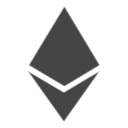Curve
(CRV)

Curve
(CRV)

Curve DeFi Statistics & Analysis
Looking at the Curve token in the period of 30 days, it’s evident that the CRV price, standing at $0.29, has been stable compared to the previous period. The Market Cap is $354,697,932 with a 0% change, which, in comparison, signals stability of the token’s general market value.
The Current TVL metric in the 7-day period shows that CRV token has $1,822,709,771 stacked & locked in its smart contracts, with a 0% change. Finally, Curve token’s CAP/TVL Ratio is showing stability with a 0% fluctuation, and it signals whether the token is going to be a rewarding long term asset or not.
All these metrics give you informative signals on how valuable the Curve & the CRV token actually is, and how it performs in the current market.
Curve (CRV) dApp Analysis
Get the most important Curve dApp metrics at your fingertips - analyze the in-depth charts below, evaluate dApp’s activity in different time periods & make fast, accurate decisions!
Curve Smart Contract Statistics
Curve dApp Technical Analysis
Curve dApp is a crypto asset from the DeFi category built on the Ethereum protocol. Now it’s ranked as #87 in general dApp rankings according to the user count, and #41 in the DeFi category, which gives you a good idea of how Curve dApp performs among its competitors.
By analyzing Curve dApp data in the last 30-day window, it’s evident that the dApp’s Balance is $200,915,798, and the Volume is bullish with $7,979. Curve has generated 994 Transactions with a 36.97% drop in the 30-day period. Clearly, the Volume has been growing by 8387.5% in comparison to the previous 7-day period. The data of the last 7 days show that the Curve user base is 851 & has been increasing by 14.37%.
We also recommend taking a look at the Curve Activity Overview & Balance of Smart Contracts graphs to see how these important metrics fluctuate & change over time.
FAQ
The Crypto Portfolio Tracker tool allows you to check all of the most important crypto metrics in regards to Curve, or any other dApp out there. These metrics include unique user counts, dApp volume, balance, transaction counts, DeFi statistics, smart contracts, and much more. Doing so, you'll learn that Ethereum-powered Curve is ranked as the #87 dApp, overall. All of the metrics can be viewed in 24-hour, 7-day, and 30-day periods.
The BDG Crypto Portfolio Tracker tool provides you with all of the information that you might need to figure these things out! All you need to do is analyze the main criteria - things such as market cap, transaction counts, CAP/TVL ratio, and a few more. Probably, volume traded is the first and one of the most important metrics to start with, it shows an overall demand for the dApp tokens. You may also check how Curve compares with other dApps, as well. Depending if the results satisfy you or not, you'll have a much better idea of whether or not Curve is worth tracking!
In the last 24 hours, Curve had a volume of $0. This is a 0% change compared to the previous period. In the last 7-day period, the volume of the dApp has changed by 8387.5%. Lastly, if you were to look at the 30-day period, the change is around 22.13%.
DeFi stands for decentralized finance and is also known as the blockchain-powered form of finance. It doesn't rely on any centralized banking institutions and uses smart contracts instead. Those smart contracts are usually based on the Ethereum blockchain. The most popular DeFi projects include Uniswap (UNI), PancakeSwap (BSC), ChainLink Token (LINK), Wrapped BTC (WBTC), Dai Stablecoin (DAI), and others. You can take a look at the top DeFis in our comprehensive DeFi directory.
A dApp is a decentralized application that runs on a P2P network, such as a blockchain, and is fueled by tokens. The main difference between dApps and regular applications is that they eliminate middlemen, meaning no single entity has control over the network. Also, dApps are transparent as data is kept public and smart contracts are open-sourced. This is true no matter if the dApp is a crypto wallet, an exchange platform, or else.
The main benefit of dApps is that they're completely free from the control of any single authority and operate by the logic of smart contracts. This means that no individual, no matter how powerful, can control the dApp after its smart contract is launched into the blockchain. Moreover, a P2P system ensures that decentralized applications continue to run even if significant parts of the network stop operating. dApps communicate with smart contracts that make the functionality and integration of cryptocurrencies effortless.

